
SCUBA diving the Great Barrier Reef is at the top of every diver’s wish list. The world’s largest coral reef is a super massive organic ecosystem consisting of 2,900 individual reefs and 900 continental islands and coral cays across 1,400 miles. As the only one of the seven natural wonders visible from space, there are so many ways to experience the rich biodiversity from above and below.
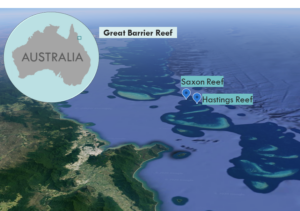
From Cairns, the dive boat sails a couple hours through rolling waves. We put on scuba gear and special stinger suits that are designed to cover almost all of your skin against the lethally toxic jellies. The blue stinger suits are ultra-thin with mittens, thumb gloves, and a hood. I am the first person from the boat to enter the Coral Sea and after giving the OK signal, I wait for the rest of the divers. Conditions above the water are sketchy with mild rain, light currents, and an overcast sky.
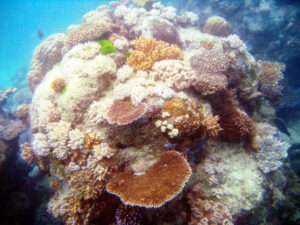
Saxon Reef (Dive #1)
Under the sea, a blue-tinged garden of aquatic flora and fauna reveals itself. The reef is a three-dimensional, labyrinthine explosion of life and color. As I swim up and down hills, shimmy through narrow ravines, and drop into a small gully, I notice the coral’s plant-like syncopations and gyrations in the gentle current. Schools of stained glass colored fish flit and dart about in every direction. Using a few flutter kicks, I maneuver into a suitable viewing position for inspecting the tiger-stripe skin of a sea cucumber. After an inadvertent sip of the briny water through my regulator, I am awakened from my mesmerized state. With 500 bar of oxygen left, I slowly head up to the edge of the dive boat. I pull my flippers off, climb up the ladder, sign in to the dive board, and remove my air tank and BCD.
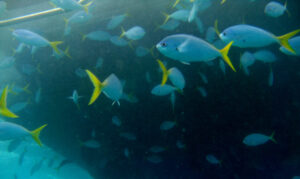
Back on the upper deck of the boat, I pull off the stinger suit and feel the chilly breeze on my skin. From the top, I watch the crew feeding a large wrasse at the side of the boat.
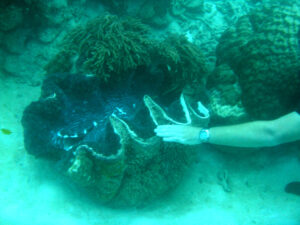
Saxon Reef (Dive #2)
The second dive is on the other side of Saxon Reef. On this dive, we see more sea cucumbers, mohawked lionfish, and trigger fish. The guide sticks his hand inside a giant clam and after he removes his hand, the clam shell swiftly closes shut. The giant clam is the largest bivalve ever to exist on this planet.
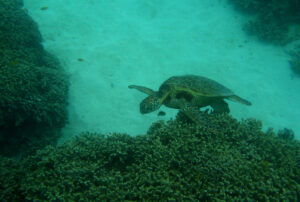
The highlight of the dive is the green turtles. They are effortlessly graceful as their long flippers allow them to smoothly glide through the water. And it is fun to spy on the clownfish hiding among the coral polyp tentacles. The coral carpet is definitely in full bloom.
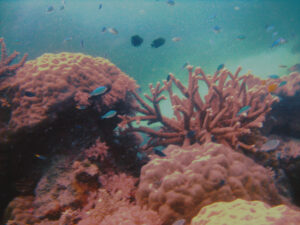
Hastings Reef (Dive #3)
After an hour break, the vessel brings us to Hastings Reef for our final dive. The water is teeming with sharks, butterfly fish, wrasses, and more turtles. Someone mentioned that this dive is like being inside a colossal aquarium.
On the voyage back to Cairns, I doze off on the diver cabin on the upper deck. As we disembark, the ship’s friendly crew waits in a line outside the ship to bid us farewell.
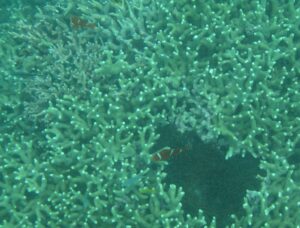
Dive Information
Where: Cairns Reef Fleet Terminal (1 Spence Street, Cairns) is located at Marlin Wharf. This is where most reef tours depart from Cairns to the Great Barrier Reef. Reserve a spot early since most vessels are booked well in advance.
When: The boat departs at 8:15 a.m. and returns at 4:30 p.m.
Dive Operator: Down Under Cruise & Dive
Dives:
- Saxon Reef: 11 m, 35 minutes, 150 bar
- Saxon Reef: 11 m, 33 minutes, 150 bar
- Hastings Reef: 11 m, 32 minutes, 150 bar